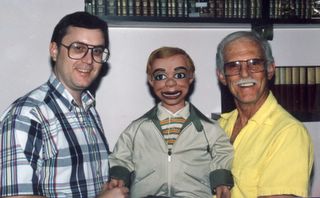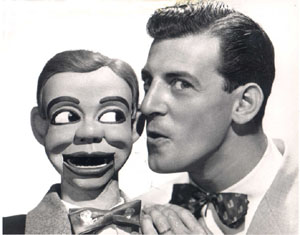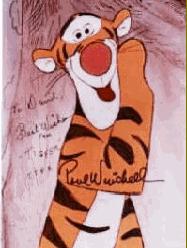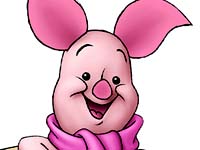Actors can cash in with "voiceover" ads, but ...

With a dozen people listening in the control room, Carey Bolden is reading a sample script for a cosmetics commercial. She's supposed to sound authoritative, friendly and relaxed — all at the same time — while breezing through terms like "bio-performance intensive clarifying essence" as if she says them every day.
As her sighs and grimaces indicate, this is hard work, but instructor Kathy Levin offers no apology. "If it were easy," says Levin, "everybody could do it."
Indeed. At times it may seem like everyone is doing it.
Turn on your radio or television any hour of the day or night, and someone is selling you something.
A British-accented gecko peddles car insurance. A talking cactus wants you to eat at Taco Time. Voices you half-recognize from movies and TV shows tell you what to drink, what to drive, what to feed your cats — even what pill will help your sorry sex life.
They're called "voiceovers." They don't win Emmy Awards, and they don't put actors' names up in lights. But they're likely the most common form of acting you encounter — messages that come at you dozens, if not hundreds, of times a day.
We're talking big bucks
It's no mystery why actors do this work; an hour or two behind the microphone can pay what some stage actors in Seattle earn in a week.
"It's not unusual to make $200 or $300 for a hour of work, but it's getting that work in the first place that's time-consuming," said Dave White of Bothell, one of the area's busiest voice actors.
If you meet White, 46, at his favorite Starbucks, you likely won't recognize him, unless perhaps you were a frequent Bathhouse Theatre patron more than a decade ago. But as soon as he begins to speak, you know he's been in your car and your home, impersonating a Providence physician, selling Jorve Roofing, inviting you to the Clearwater Casino.
"I can be an old guy, a tough guy, an obnoxious neighbor. Yesterday, I was a snob from the East Coast in the morning and a Marine drill-sergeant voice in the afternoon." Perhaps his most unusual gig was supplying the voice of a talking beer-can opener, and even in a midmorning interview, he still delivers the line convincingly: "Oh, yeah. Time for a beer!"
White, a University of Washington drama grad, eased out of live theater in the mid-'90s when his voice work took off. He spent thousands having an audio engineer install a recording studio in his home, so now he can not only audition for work from home, he can perform it there, too, giving him more time with his wife and two young sons.
Acting like a pro
But the same technology that allows White to send his work to Chicago, Atlanta and Los Angeles allows actors in those cities to compete for work here.
"Yes, it can be very lucrative, but it's also extremely competitive," said Topo Swope, a talent agent who represents White and some 220 other Northwest actors. About a third of her clients do voiceover work — ranging from commercials to in-house corporate presentations to "on hold" messages played on companies' phone lines. There's even a budding market for voicese in video games.
But breaking into the business isn't easy. "I get calls from people all the time who say, 'Everyone has been telling me I have a good voice,' and they want to do voiceovers," Swope said. "But the people who get the most work are actors, not just 'voice talent.' "
Experienced actors are more likely to have believable "non-announcer-type" voices. They may be able to do a variety of characters, and since they are used to taking direction, they can often nail a performance quickly — saving the client money on studio time.
A varying volume of work
Another voice you'd likely recognize is Mary Kae Irvin's. She's the spokeswoman for Sleep Country USA — on TV, radio and in print — and has been heard in commercials for Alvin Goldfarb Jewelers, the Mariners, the Seattle Opera and dozens of other clients.
Voice work "comes in fits and spurts," she said. "You might go through a period where you're throwing things at the wall and they aren't sticking, then maybe you have a Renaissance and things start clicking again. It depends if you're the flavor of the week."
Irvin, who earned a masters of fine arts from the University of Washington and has worked for several local theater companies, would offer voiceover wannabes three pieces of advice, which she says she distilled from nine years of college: "Be on time. Be here now. Participate fully."
Deluxe speakers
In terms of acting experience, the voices on Seattle airwaves run the gamut. Perhaps you've heard Shuttle Express commercials in which Gregg is bumming a ride to the airport from Sue? Neither is an actor. Sue is Shuttle Express's marketing manager, Donita Leeson, and Gregg is Gregg Arnold, who runs the company's marketing firm, Rainmaker Marketing.
"Shuttle Express is a costly business to run, and there's not a lot of money left over to produce expensive commercials," says Arnold. "We're a small company just trying to get our message out."
In contrast, the long-running "Clark and Lewis Expedition" commercials for Horizon Airlines feature accomplished actors with extensive credits. Lewis is Patrick Warburton, who played Elaine's boyfriend, Puddy, on "Seinfeld." Clark is Richard Kind, whose TV appearances include "Spin City" and "Mad About You."
Score!
With everyone from A-list celebrities to corporate officers making voiceovers , can a novice possibly hope to become the next "flavor of the month," the voice clients absolutely have to have to hawk their new gizmo or revolutionary service?
Back in that Lake City sound studio, Carey Bolden and the other nine students hope the answer is yes. And even though Bolden is just starting to develop her skills, she's already had her first impressive payday.
In November, she recorded two 30-second radio spots for a jewelry store, and collected $500 for each. "We did the two commercials in about 20 minutes. I did it on my lunch hour," said Bolden, who works in corporate services for a hedge-fund company.
In one of the spots, she needed to act as if her sweetheart had just given her diamond earrings. "I had to say something like 'You didn't!' and do that whole scream thing."
Molding talent
Levin, who teaches the voiceover class through Creative Talent Development, has another one of those voices you instantly recognize, whether it's from Macy's ads (and The Bon before that), Tony Roma's, Southcenter Mall, Emerald Downs or others.
She takes a no-nonsense approach to her teaching, quick to point out which students need more energy in their performances, and which need to ease up. "You're trying too hard," she tells one. "We don't want to hear you try too hard, 'cuz we'll feel like you're a huckster."
In each commercial script, she says, there are two or three critically important terms. Make sure you stress those, but don't "overpronounce" everything else.
At 27, Bolden is the youngest student, while Harry Bonnette, 63, anchors the other end of the age spectrum. It's been 35 to 40 years since the acting he did in college and community theater. Now he's looking for possible part-time work when he retires from his customer-service job at United Way of King County.
In his normal workday, Bonette may spend 60 percent of his time on the phone, and he has a calming, fatherly voice. But at one point, Levin says it's too mellow for a particular spot he's reading. "Let's goose you up a little," she says.
Levin is frank with her students about the competition they'll face. This is no get-rich-quick scheme, and they may suffer rejection after rejection before they find work.
But she also tells them they each have something to sell: themselves. "There's something unique about every single person, and that one thing could be what an ad agency is looking for."














